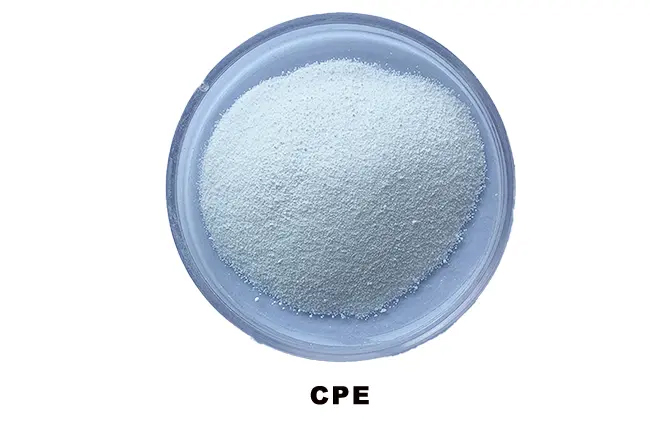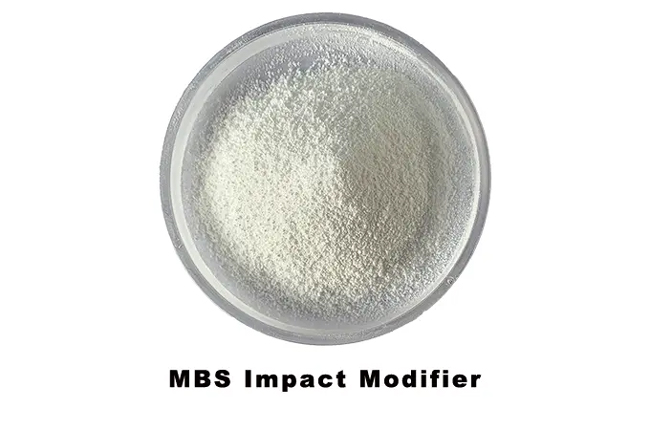An impact modifier is a substance added to a material, typically a polymer or plastic, to enhance its toughness and ability to withstand mechanical stress and impact without breaking or cracking. These modifiers work by absorbing and dissipating the energy from impacts, thereby improving the material’s durability and performance in applications where resistance to impact is crucial.
Purpose: To improve the impact resistance of polymers and plastics.
Function: Absorbs and dissipates impact energy to prevent cracking or breaking.
Applications: Widely used in automotive parts, packaging materials, construction products, and consumer goods.
In the dynamic field of polymer science, PVC impact modifier series stand as essential components, elevating the physical attributes of polyvinyl chloride (PVC) resins. These modifiers, categorized as additives, exert a significant influence on PVC's impact resistance and ductility, broadening its applicability across diverse sectors.
Chlorinated Polyethylene or CPE impact modifier emerges as a prominent category among PVC impact modifier. Formed through the chlorination of HDPE in an aqueous phase, CPE undergoes a transformation from crystalline HDPE to a non-crystalline elastomer with increasing chlorination levels. Exhibiting a chlorine content typically between 25-45%, CPE impact modifier boasts exceptional cold resistance, weatherability, flame retardancy, and chemical resistance. Widely employed in China, particularly in PVC pipe and profile production, CPE is often blended in ratios of 5 to 15 parts with other toughening agents like rubber or EVA, albeit with a compromise on aging resistance.

Get CPE Impact Modifiers Quote
The Acrylic Resin Core-Shell Modifier, i.e. acrylic impact modifier PVC, represents a cutting-edge addition to the realm of impact modifiers. Comprising a copolymer of methyl methacrylate and acrylate monomers, acrylic impact modifiers demonstrates remarkable impact strength amplification for PVC materials. Featuring a core-shell structure, ACR combines high polymer shells of methyl methacrylate and ethyl acrylate with a rubbery core formed through butyl acrylate crosslinking. Its suitability for outdoor PVC plastic products is underscored by its excellent processing properties, smooth surfaces, aging resistance, and weld strength. However, acrylic impact modifier commands a higher price tag compared to CPE impact modifier, typically added in quantities ranging from 6 to 10 parts.
MBS, a terpolymer of methyl methacrylate, butadiene, and styrene, emerges as another pivotal PVC impact modifier. With a solubility parameter akin to PVC, MBS exhibits robust compatibility with the polymer. A notable advantage lies in MBS's ability to confer transparency to PVC products. Addition of 10-17 parts of MBS modifier enhances impact strength by 6 to 15 times while maintaining excellent transparency and minimal impact on other resin properties. Despite its higher cost, MBS finds utility in combination with other modifiers like EVA, CPE, and SBS. However, its limitations in heat resistance and weatherability restrict its outdoor applications, rendering it unsuitable for plastic window and door profiles.

Quote for MBS Impact Modifiers
Selecting PVC impact modifiers involves a classification based on their functions and modification characteristics. These PVC compounding additives encompass six categories tailored to specific needs: high-efficiency impact modifiers, transparent impact modifiers, thermal deformation modifiers, general modifiers, weatherability modifiers, and processing aids. Each category addresses distinct requirements, ensuring optimal performance across various applications.
In essence, delving into the application knowledge of PVC impact modifiers is paramount for optimizing PVC-based product properties and performance. A nuanced understanding of modifier types, characteristics, and selection criteria paves the path for achieving desired outcomes in diverse applications.
